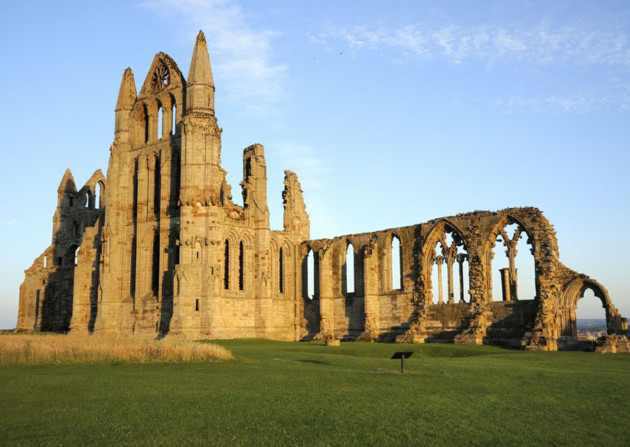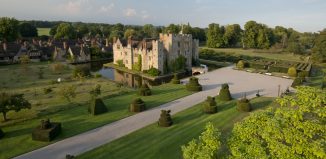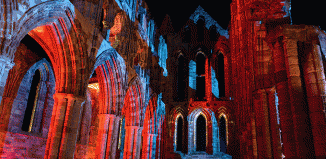Whitby Abbey
Ian White
High on a cliff-top, the silhouette of Whitby Abbey looms darkly over this popular seaside town. It’s easy to see how the Irish author Bram Stoker was inspired by its gothic presence to write his Victorian novel, Dracula. But this abbey wasn’t the first monastery to be built on this site. That honour belongs to the Anglo-Saxon King Oswy of Northumbria who founded a ‘double monastery’ for men and women here in AD657. This is where the future of the English church was decided by the Synod of Whitby in AD664. Though nothing remains of the original monastery above ground, many intriguing artefacts have been unearthed and these are displayed in the visitor centre at Cholmley Mansion, which shares the headland with the imposing ruins of Whitby Abbey.
Built by the Normans in about 1220, this Benedictine Abbey is Early English Gothic in style. The pinnacled east end and north transept still stand high, richly carved with characteristic ‘dog’s tooth’ embellishment. The church’s west front was hit by German naval shelling in 1914 and centuries of wind and rain have added their own etched and pitted decoration, making it even more appealing for the thousands of ‘Goths’ who come to see it.
The Cholmley family mansion was built after Henry VIII’s suppression of the abbey. Its classical façade of 1672 is fronted by a restored courtyard, the centrepiece of which is a life-size copy of the famous Borghese Gladiator statue. Bronze casts of the original Roman marble sculpture (now in the Paris Louvre) from the first century BC were made for King Charles I and copies graced many great English houses owned by families who were Royalist supporters during the Civil War.
Whitby Abbey, Abbey Lane, Whitby, North Yorkshire YO22 4JT
Tel: 01947 603 568








